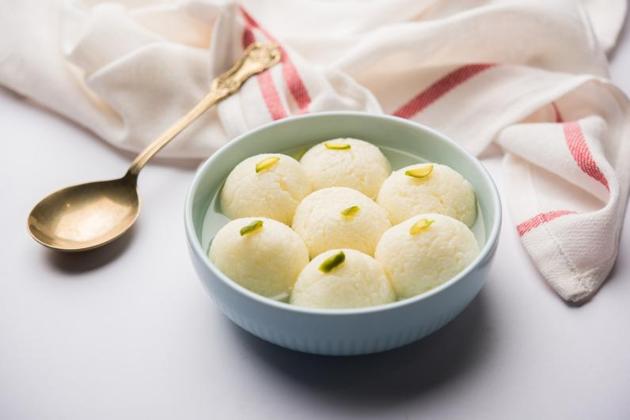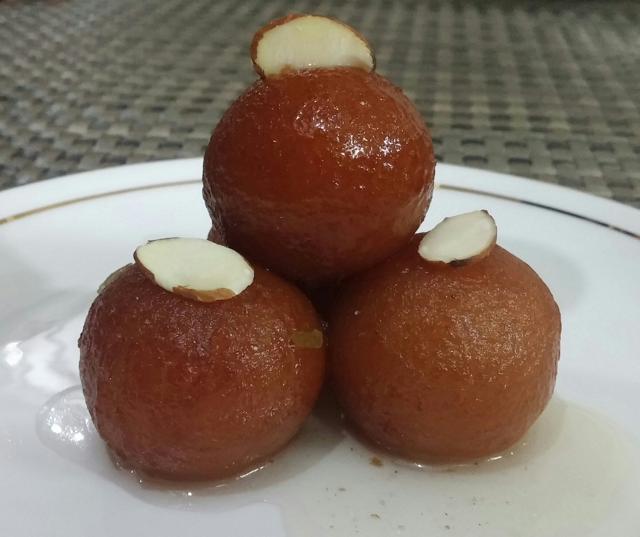Kunal Vijayakar takes a look at words best said with your mouth full
‘I challenge you to say Rosogolla correctly,’ says the foodie, ‘without a big spongy orb safely buried in your mouth!’
Gulab Jamun, Jalebi, Ladoo, Petha, Barfi, Kalakand, Khaja, Halva — these are the names of just some of the hundreds of sweets you can find in India. But there are some Indian sweets whose names can be pronounced correctly only if you have the whole sweet in your mouth. Seriously.

If and only if, your mouth is full of a sweetened two-layered khoya dumpling, can you pronounce Kheer Kodom correctly. You can enunciate Lobong Lotika accurately, only if a huge pastry envelope with a filling of khoya, grated coconut, nuts, raisins and cardamom is rolling around in your mouth. You will never be able to say Joynogorer Moa right without your mouth full of this big ball of Kanakchur puffed rice, ghee, cardamom and poppy seeds all rolled in with nolen gurer.
Try saying Chom Chom with your mouth empty; the words will never do justice to the chilled cream sandwiched between soft, yielding rosogollas. And the rosogolla itself — I challenge you to attempt saying the word correctly without a big spongy rosogolla, dripping with sugar syrup, safely buried in your mouth. It’s just not possible.
By now you must have guessed that I am talking about Bengali Sweets and the rosogolla is not only the meridian but also the genesis of many a Bengali sweet. For the outside world, rosogolla is Bengal and Bengal is rosogolla, until recent times, when the claim was impugned by a neighbouring power, Odisha.

I was on one of my food tours, driving down the Bhubaneswar-Cuttack highway late at night, a few years ago, when all of a sudden on the side of the road emerged a flurry of brightly tube-lit makeshift stalls, the glow, intensified by the hundreds of glass jars lined up in each stall. We had reached Pahala, the rosogolla strip of Odisha. It’s a must stop when you are driving from Kolkata to Puri.
I was there on a chilly night, when the headlights of passing trucks and cars caught the mist and dust. We set off to explore. Between freshly made Chhena Poda (a cottage-cheese cake with sugar, and suji, wrapped in leaves of the Sal tree and baked for several hours till brown, over a log fire) and Chhena Gaja (cottage cheese, sugar and semolina, boiled and sometimes fried after boiling, and coated in sugar syrup), there were bowls and jars of rosogollas by the hundreds.
The rosogollas are made right there and sold fresh off the fire. The stalls are open all day and fresh rosogollas are made all night. And these proud Odiya confectioners claim they have been here, in Pahala, making rosogollas for over 100 years. Which brings us to the popular argument – who ‘invented’ the rosogolla. Many insist it is a version of Kheer Mohan created by the mithai-makers of Pahala.
As their story goes, a version of the rosogolla has been part of the Jagannath Puri tradition for centuries. At the end of the rath yatra in Puri, when Lord Jagannath returns to his temple after nine days, he pacifies his wife, the goddess Laxmi, who is angry with him for not taking her along, with rosogollas.
Honestly I don’t have enough research, information or expertise to add to the argument of this patent war. I know that both the states have acquired Geographical Indication (GI) tags for their versions of the sweet meat, so I am going to limit myself to the taste and the romance of each.
The man whose name crops up every time you mumble rosogolla is Nobin Chandra Das, widely credited as the Bengali creator of the rosogolla. Using techniques left behind by the Dutch, he is said to have managed to stabilise and bind curdled milk and invented the pure white, fluffy, spongy orb that has become the icon of Bengal. People cross land and water to buy a bag or a can of rosogollas at KC Das in Kolkata’s Kalighat.
These pure white creations are quite unlike those made in Pahala and neighbouring Odiya towns. The Pahala rosogollas come in a variety of shades of brown and red. The Bikali Kar (Khir Mohan) rosogolla from Salepur (near Cuttack) is a burnt brown, while the rosogolla from Kalahandi is a light pink. The Pahala rosogollas are nearly always sold hot. They are usually less spongy and melt in the mouth, and that is why legend says you must eat at least a dozen at a time. A dozen at a time? That can’t be such a hard thing, right?
Stay updated with all the Breaking News and Latest News from Mumbai. Click here for comprehensive coverage of top Cities including Bengaluru, Delhi, Hyderabad, and more across India along with Stay informed on the latest happenings in World News.
Stay updated with all the Breaking News and Latest News from Mumbai. Click here for comprehensive coverage of top Cities including Bengaluru, Delhi, Hyderabad, and more across India along with Stay informed on the latest happenings in World News.






